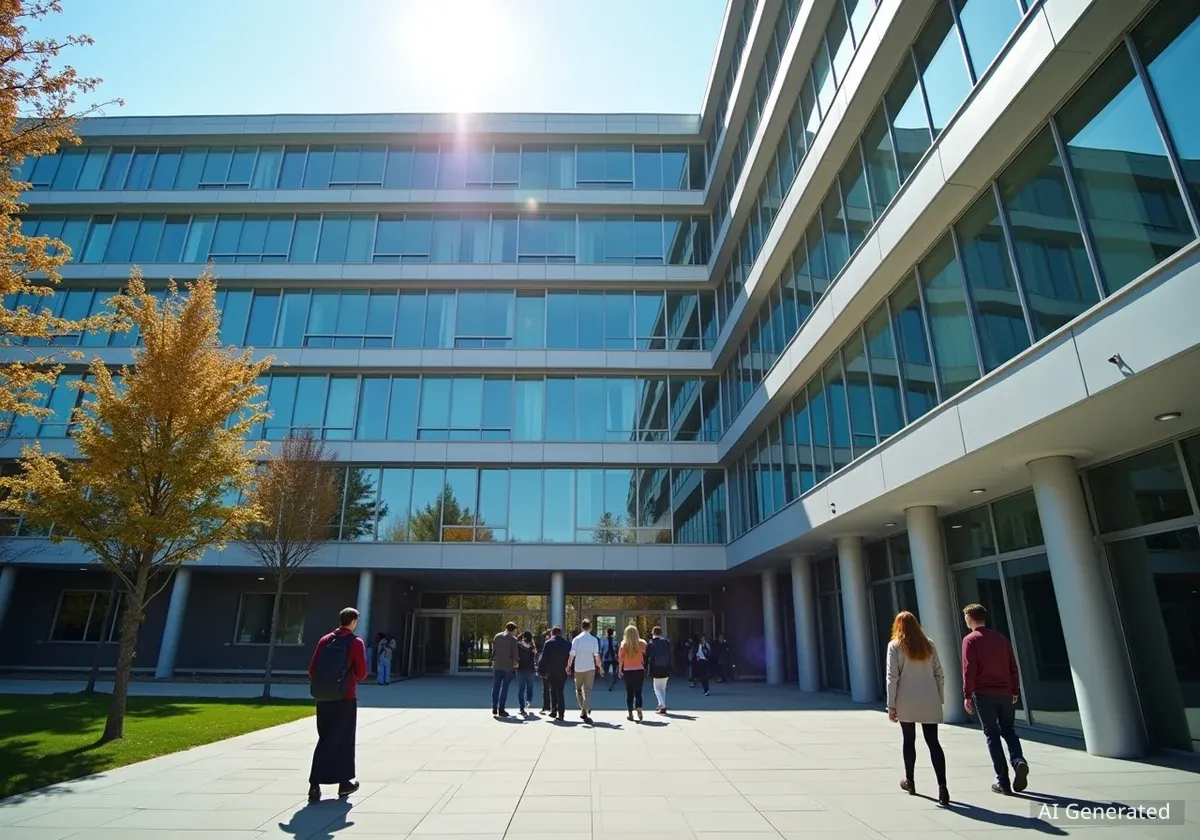Texas A&M University has officially opened its new comprehensive engineering facility, the Jack E. Brown Building, following a $140 million renovation and expansion project. The facility, located at the heart of the College Station campus, is designed to support modern engineering education and interdisciplinary research.
The updated 206,000-square-foot building now serves as the home for the Department of Materials Science and Engineering and the J. Mike Walker ’66 Department of Mechanical Engineering. It features advanced laboratories, collaborative learning spaces, and updated infrastructure to accommodate growing student enrollment and research demands.
Key Takeaways
- Texas A&M University opened the newly renovated Jack E. Brown Building for engineering students.
- The project cost $140 million and expanded the facility to 206,000 square feet.
- It houses the materials science and mechanical engineering departments.
- The building includes 24 specialized teaching labs and 15 modern classrooms.
- The facility is designed to support an estimated 2,500 students and 100 faculty members daily.
A Strategic Investment in Engineering Education
The reopening of the Jack E. Brown Building marks a significant milestone in Texas A&M's commitment to advancing its engineering programs. The original structure, built in 1941, has been transformed into a state-of-the-art educational hub designed to foster innovation and hands-on learning.
University officials state the primary goal of the renovation was to create a facility that reflects the future of engineering. This includes spaces that encourage students from different disciplines to work together on complex problems, mirroring modern industry practices.
The project was funded through a combination of university funds and philanthropic contributions. The extensive overhaul was necessary to replace outdated infrastructure and provide the advanced technological resources required for contemporary engineering research and instruction.
Redesigned for Modern Learning
The interior of the building has been completely reimagined. It now boasts 24 specialized teaching laboratories, 15 modern classrooms, and numerous student collaboration areas. These spaces are equipped with the latest technology to support fields like robotics, advanced manufacturing, and materials characterization.
A central feature of the redesign is the emphasis on visibility and collaboration. Many labs have large glass walls, allowing students and visitors to observe ongoing research. This open-concept design is intended to inspire curiosity and promote cross-disciplinary interaction.
Historical Context
The original Jack E. Brown Building served the university for over 80 years. Its renovation is part of a broader campus modernization effort to ensure Texas A&M remains a leading institution for engineering and technology. The building is named after Jack E. Brown, a distinguished alumnus from the class of 1950.
Advanced Facilities and Departmental Homes
The renovated building provides permanent, modern homes for two key engineering departments. The Department of Materials Science and Engineering, one of the newer departments in the college, now has dedicated facilities for research in polymers, metals, and composites.
The J. Mike Walker ’66 Department of Mechanical Engineering, one of the university's largest and oldest programs, also gains significantly expanded and upgraded space. The new labs will support research in areas such as turbomachinery, robotics, and energy systems.
"This building is not just a structure of bricks and mortar; it is a testament to our commitment to providing our students and faculty with the best possible environment for learning and discovery," said Dr. Alan Sams, interim provost and executive vice president, during the opening ceremony.
Key Features of the New Facility
The building incorporates several key features designed to enhance the student experience and research capabilities. These additions are central to the university's strategy of providing hands-on, practical education.
- High-Bay Laboratory: A large, open space for working on large-scale projects, such as vehicle prototypes and industrial machinery.
- Advanced Manufacturing Suite: Equipped with 3D printers, CNC machines, and other tools for rapid prototyping and digital fabrication.
- Materials Characterization Labs: Featuring powerful microscopes and testing equipment for analyzing the properties of new materials.
- Student Collaboration Pods: Small, informal meeting areas scattered throughout the building to encourage teamwork and study groups.
By the Numbers
The Jack E. Brown Building is expected to serve approximately 2,500 students and 100 faculty members on a daily basis. The 206,000-square-foot space represents a significant increase in the College of Engineering's physical footprint.
Supporting Growth and Interdisciplinary Research
The expansion was driven by the rapid growth of the Texas A&M College of Engineering, which is one of the largest in the United States. The new facility provides the necessary capacity to accommodate this growth while improving the quality of education.
Officials emphasized that the building is designed to break down traditional academic silos. By housing both materials science and mechanical engineering under one roof, the university hopes to spark new research collaborations. For example, mechanical engineers designing a new robot could work directly with materials scientists to develop lightweight, durable components.
This interdisciplinary approach is critical for addressing complex global challenges, such as developing sustainable energy sources, creating advanced medical devices, and designing resilient infrastructure.
Future Impact on Students and the State
The opening of the Jack E. Brown Building is expected to have a long-term positive impact on both students and the Texas economy. Graduates from these programs will enter the workforce with experience using the same advanced equipment found in leading technology and manufacturing companies.
According to the university, this will make them highly competitive candidates for jobs in aerospace, energy, defense, and other key sectors in Texas. The facility also enhances the university's ability to attract top faculty and graduate students from around the world.
The investment is seen as a crucial step in maintaining the state's leadership in technology and innovation. By training the next generation of engineers in a world-class facility, Texas A&M aims to contribute directly to economic development and technological advancement in the region and beyond.





